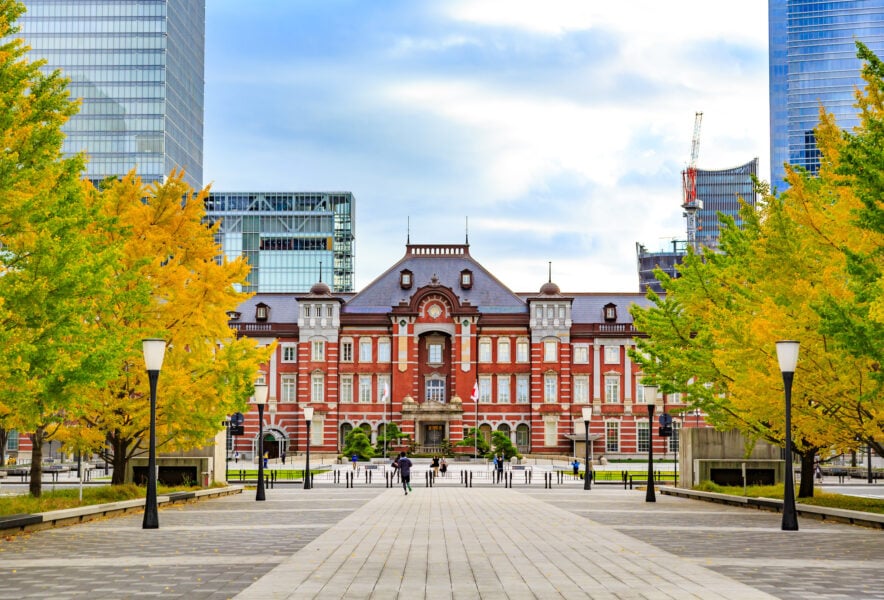Tokyo Station is one of the largest terminal stations in Japan, and first-time visitors may be surprised by its size and complexity.
With the Tokaido Shinkansen, Tohoku Shinkansen, conventional lines, and subways all intersecting at this massive station, it is not uncommon to get lost when transferring between trains.
In this article, we will provide a thorough explanation of the key points for international visitors to transfer trains smoothly at Tokyo Station.
Please take a look at our easy-to-understand tips on how to reach your destination without getting lost.
- Navigate the complex structure of Tokyo Station! Use the floor plans
- Introduction to the Tokaido and Tohoku Shinkansen ticket gates and the ticket passing process
- Transfer Strategy from Shinkansen to Conventional Lines
- Don't get in trouble at Tokyo Station! English Support
- Where can I turn to when I get lost? How to use the Information Center
- Suitcases and baby strollers are not a problem! Points to keep in mind when moving around
- Tokyo Station's station services make travel more convenient!
- A guide to recommended spots in the station! The best places to eat and take a break
- Comfortable travel in Tokyo Station!
Navigate the complex structure of Tokyo Station! Use the floor plans
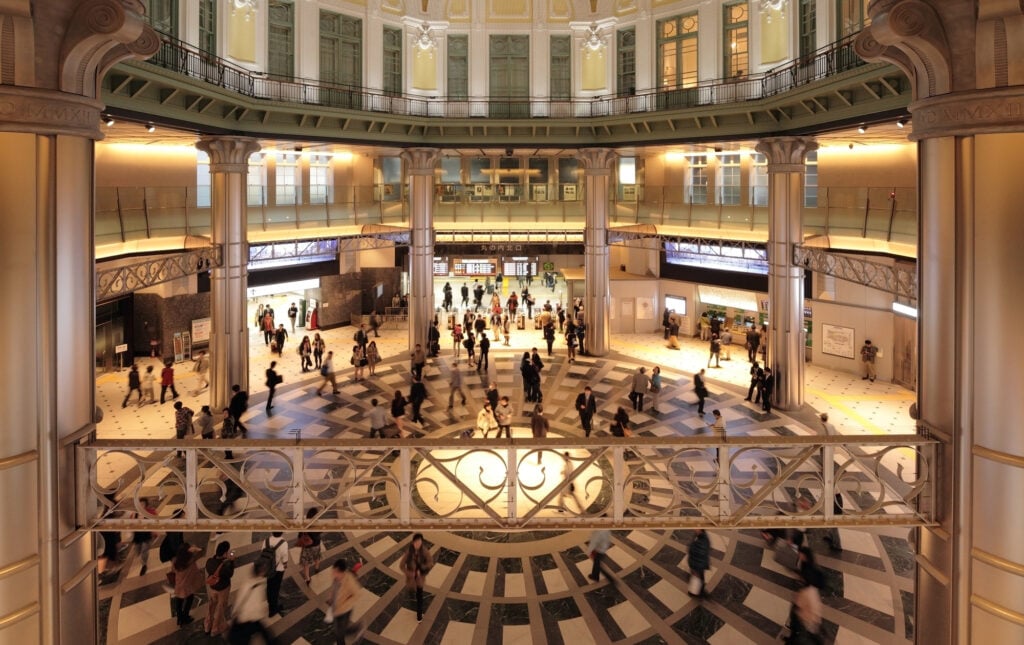
Tokyo Station is one of the largest terminal stations in Japan, and first-time visitors are often surprised by its size and complex structure.
Especially for visitors from overseas, the intricate structure of numerous lines and platforms spread out above and below ground may make changing trains difficult.
To ensure smooth transfers, it is important to understand the station structure in advance and use a floor map.
Tokyo Station is divided into four main floors. Above ground are the Shinkansen platforms, below which are the JR conventional lines, and further underground are the Tokyo Metro Marunouchi Line and the platforms for the Keiyo Line, Yokosuka Line, and Sobu Rapid Line, which are located a short distance away.
The key to moving between floors is to make good use of elevators and escalators.
For example, when transferring from the Shinkansen to the subway, it is important to allow extra time for travel, as you may have to pass through long corridors and multiple flights of stairs.
In a large station like Tokyo Station, checking the floor map in advance will help you move efficiently.
You can download a multilingual floor map from the official Tokyo Station website, so it is convenient to save it on your smartphone so that you can check it at any time.
Also, to make your transfers in the station smoother, please make use of the “Tokyo Station Point-and-Speak Map” on the TOKYO STATION MAP.
And if you get lost, it is important to check with station staff and information centers.
By checking the map in advance and being prepared, you will be able to move comfortably even in the vast Tokyo Station.
JR East: Station Map and Barrier-Free Information (Tokyo Station) (jreast.co.jp)
TOKYO STATION MAP Tokyo Station Point-and-Speak Map
Introduction to the Tokaido and Tohoku Shinkansen ticket gates and the ticket passing process
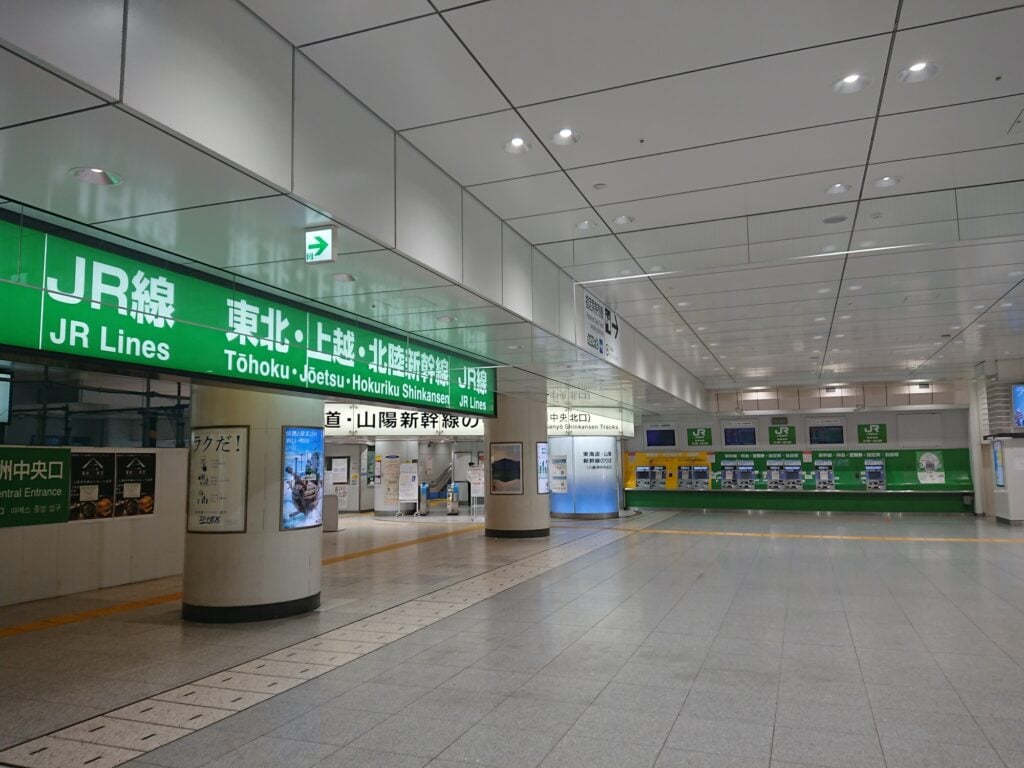
This page introduces in detail the basic procedures of ticket gates and the process of passing through tickets on the Tokaido and Tohoku Shinkansen lines, so that even first-time visitors from overseas can proceed with ease.
By understanding the automatic ticket gates in the stations and the key points for purchasing tickets in advance, you will be able to use the Shinkansen smoothly.
Let's figure out where the Tokaido/Tohoku Shinkansen ticket gates are located
When using the Tokaido/Tohoku Shinkansen at Tokyo Station, it is important to know the location of the ticket gate in advance.
Tokyo Station is very large and many people come and go, so first-time visitors often get lost.
However, if you know the location of the ticket gates in advance, you will be able to board the Shinkansen smoothly.
If you are boarding the Tokaido Shinkansen (Tokyo to Osaka/Nagoya direction), the Yaesu South Exit or the Shinkansen transfer exit is convenient.
The platforms are Lines 14 to 19, which are close to the Tokaido Shinkansen platforms and are the main entrances used by many people.
On the other hand, if you are using the Tohoku Shinkansen (Tokyo to Sendai or Morioka direction), the Yaesu North Exit or Shinkansen North Norikae Exit is easily accessible.
Since they are directly connected to the platforms of the Shinkansen heading for Tohoku, it is recommended to check in advance which ticket gate you will use depending on your destination. (Platforms are Lines 20 to 23)
The ticket gates are located on the first floor of Tokyo Station and are equipped with escalators and elevators, so even those with large luggage or in wheelchairs can use the gates with ease.
We recommend that you check the location of the ticket gate carefully before heading to the station to ensure smooth travel or business.
Prepare your ticket! Procedure to pass through the ticket gate smoothly
When boarding the Shinkansen at Tokyo Station, it is important to prepare your ticket well in advance in order to pass through the ticket gates smoothly.
Here is a simple explanation of the procedure for going through the ticket gate.
First, there are two types of Shinkansen tickets. One is a paper ticket, and the other is an electronic ticket using an IC card or smartphone app.
The procedure to go through the ticket gate is basically the same for both types of tickets.
- “Prepare your ticket” For paper tickets, there are two tickets: a boarding ticket and an express ticket. For electronic tickets, you use the QR code displayed on your smartphone or the information pre-loaded on your IC card. It is important to have both of these ready at hand in advance.
- “Going through the ticket gate” The ticket gate has a place to insert a paper ticket and a sensor to touch the IC card or QR code. For paper tickets, insert the ticket and the express ticket together into the ticket gate. The machine reads the tickets and automatically returns one ticket (boarding ticket) after passing through, so do not forget to pick it up. For electronic tickets, simply touch your smartphone or IC card to the sensor part of the ticket gate machine.
- "After passing through the ticket gate" After passing through the ticket gate, if you have a paper ticket, keep it until you get off the train. So be sure to have your phone or card readily available.
If you remember the above steps, your Shinkansen experience at Tokyo Station will go smoothly and comfortably.
Let's move smoothly from the Shinkansen ticket gate to the exit!
Language displays are very helpful to move smoothly from the Shinkansen ticket gates to the Yaesu or Marunouchi exits at Tokyo Station.
Signs in several languages, including English, Chinese (traditional and simplified), and Korean, have been installed throughout Tokyo Station.
This makes it easy for visitors from overseas to get around without getting lost.
1. Getting to the Yaesu Exit
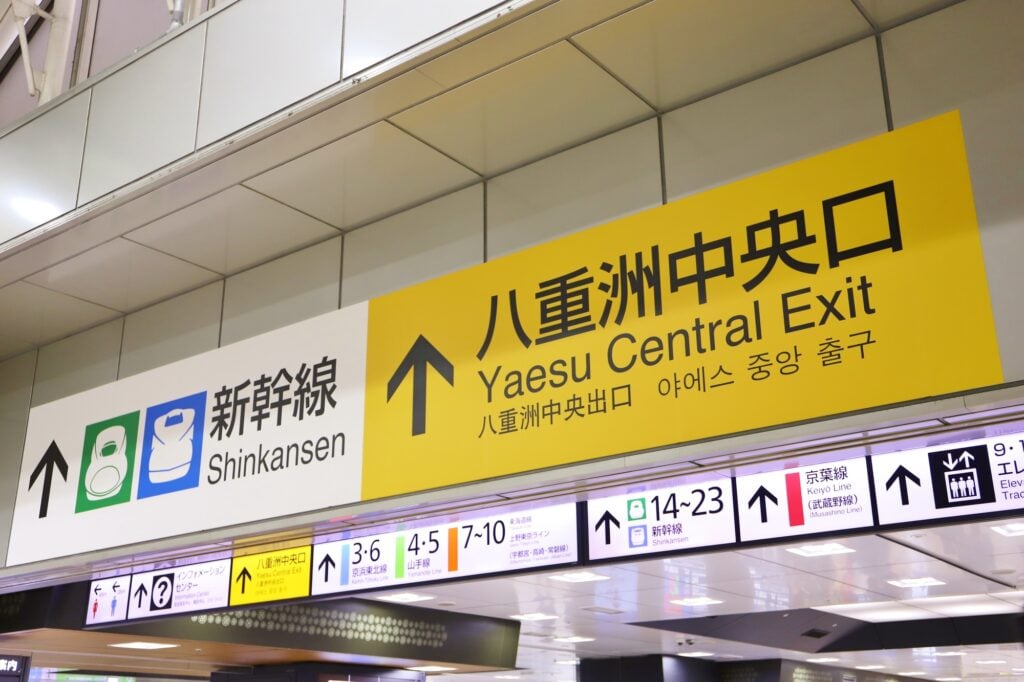
After exiting the Shinkansen ticket gates, visitors can proceed toward the Yaesu Exit without getting lost, as English signs such as “Yaesu Exit” are clearly marked.
The signs are easy to read and are designed with foreign visitors in mind.
The Yaesu Exit is especially convenient for shopping and access to the bus terminal.
2. Getting to the Marunouchi Exit
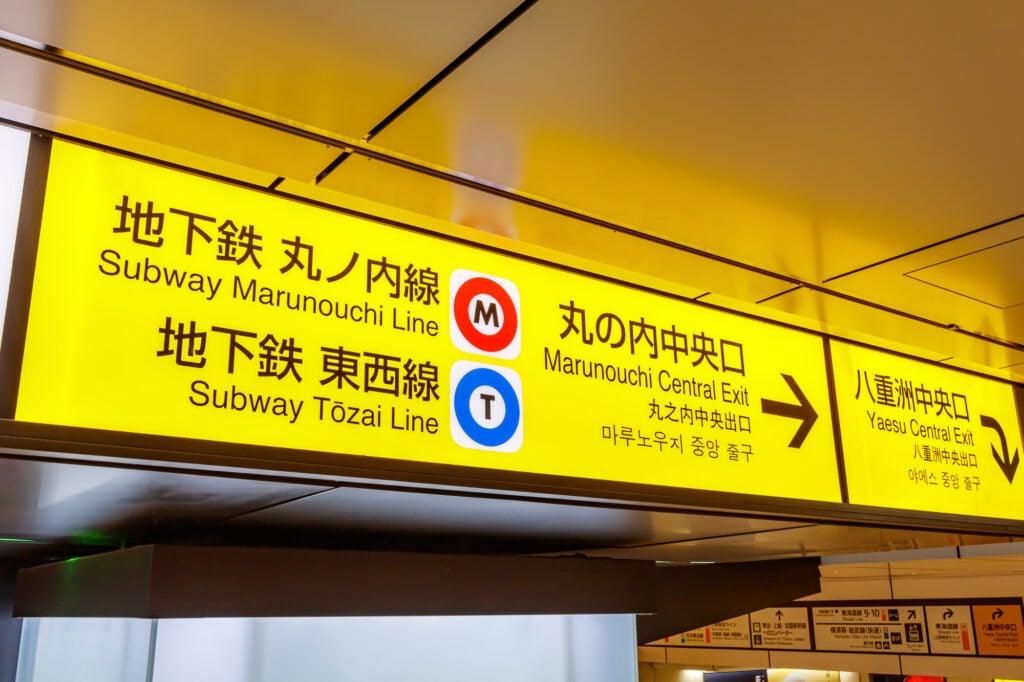
When heading to the Marunouchi Exit, English signs such as “Marunouchi Exit” are also displayed in an easy-to-understand manner.
This exit, which provides easy access to the business district and tourist attractions (such as the Imperial Palace), is equipped with multilingual information signs, making even international visitors feel at ease.
In addition, the signs are visually easy to understand and designed with the traveler's line of flow in mind, so even first-time visitors will be able to move smoothly through the station.
In this way, Tokyo Station is well equipped with multilingual support, providing a safe and comfortable environment for travelers from abroad.
Transfer Strategy from Shinkansen to Conventional Lines
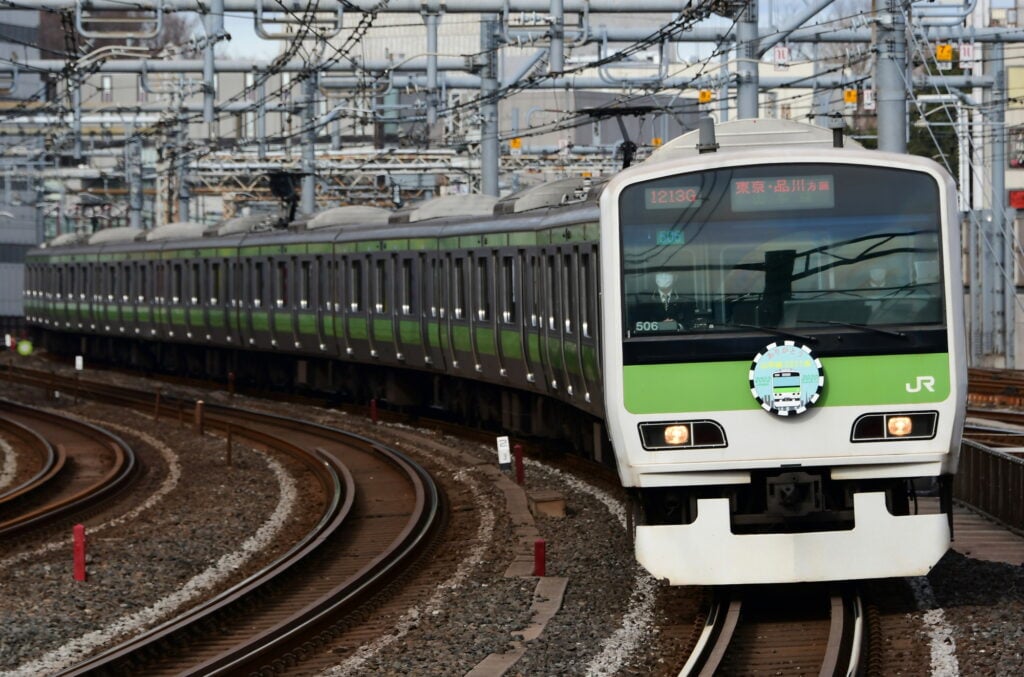
This is an easy-to-understand guide for first-time visitors on how to smoothly transfer from the Shinkansen to a conventional train at Tokyo Station.
Although Tokyo Station is a jumble of many train lines, if you check the route beforehand, you will be able to get around without getting lost.
- “Transferring to a conventional JR line”
Tokaido Line: Platforms 9 and 10
Ueno-Tokyo Line: Platforms 7 and 8
Yamanote Line: Platforms 4 and 5
Keihin-Tohoku Line: Platforms 3 and 6
Chuo Line: Platforms 1 and 2
Transfers to the above platforms are accessible via the Central Passage, South Passage, and North Passage after exiting the Shinkansen ticket gates. These lines are located from the center of the station toward the Marunouchi side, so once you exit the Shinkansen ticket gates, follow the “Marunouchi Direction” signs to reach your desired platform in sequence. The nearest Tokaido Line is about a 2-4 minute walk away, and the furthest Chuo Line is about a 3-7 minute walk away.
- "Transfer to the Keiyo Line"
If you are heading to Tokyo Disney Resort or other destinations, you will need to transfer to the Keiyo Line. After exiting the “Tokaido/Sanyo Shinkansen South Transfer Exit” of the Shinkansen, turn left and go straight down Keiyo Street to the B1 level. From there, use the moving walkway to reach the Keiyo Line platform on the fourth basement floor. It takes about 7 minutes on foot from the Shinkansen ticket gates to the Keiyo Line platform.
- “Transferring to the Yokosuka Line and Sobu Line”
To transfer to the Yokosuka Line or the Sobu Line, proceed along the central passageway toward Marunouchi. Take the stairs down to the first basement level, then continue to the fifth basement level to reach the platform for the Yokosuka and Sobu Lines. Again, the time required from the ticket gate to the platform is approximately 7 to 10 minutes.
If you keep the above routes in mind, you will be able to smoothly transfer from the Shinkansen to a conventional train and move to your next destination without getting lost in Tokyo Station.
Don't get in trouble at Tokyo Station! English Support
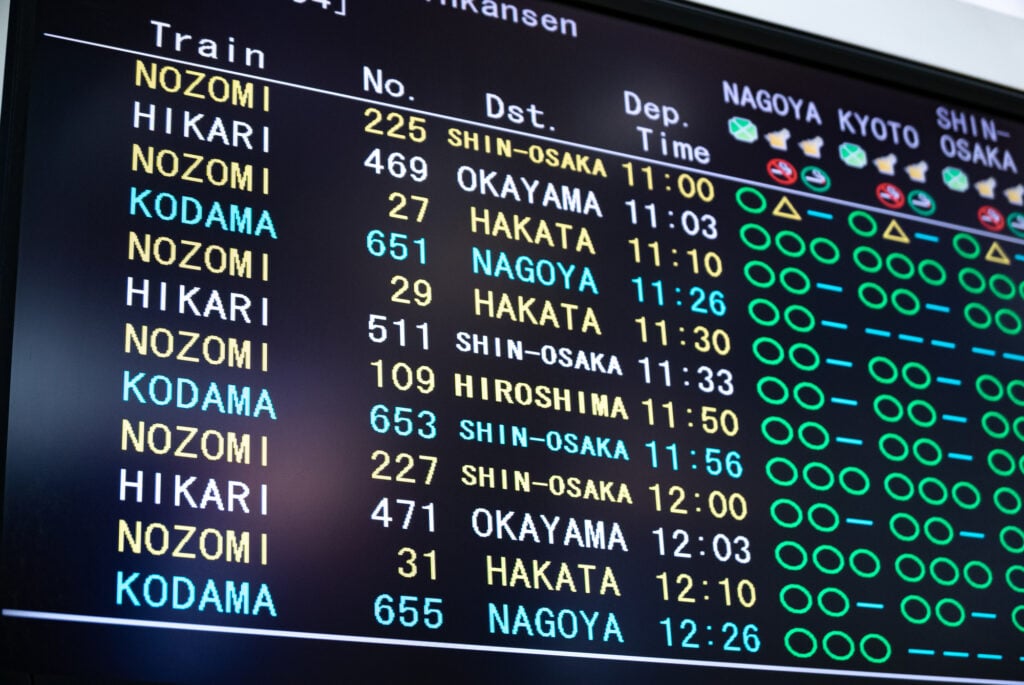
Tokyo Station is an international terminal used by many tourists, and English-speaking support is available.
A variety of support services are available for first-time visitors and those who do not understand Japanese so that they can move around with ease.
English-language information boards and staff support, as well as convenient digital tools, will help you move smoothly through the station without feeling any language barriers.
This section details the English-language support available at Tokyo Station.
Check the English signs in the station
Tokyo Station is equipped with English-language signs to help foreign visitors navigate smoothly.
Even first-time visitors can reach their destinations without getting lost in the station.
Here are some specific situations in which English signs are useful.
- “Information on platforms and ticket gates”
Signs such as “Exit” and “Ticket Gate” are clearly displayed in English around platforms and ticket gates of Shinkansen and conventional lines. Platform numbers and destinations for each line are also listed in English, and if you follow the English guidance when changing trains, you will be able to reach your destination without getting lost. English-language arrows and signs are everywhere, so even first-time visitors to Tokyo Station can feel at ease.
- “Exit Information”
Tokyo Station's main exits, the Yaesu Exit and Marunouchi Exit, are also clearly marked in English. When traveling to a business or tourist area, it is easy to tell at a glance which exit to use, making for a smooth journey to your destination. In particular, there are multiple directions for the Yaesu and Marunouchi exits, making it convenient to choose the best route depending on which area you are heading to.
- “Facility Guides”
The station also offers extensive facility information, with signs such as “Restroom” and “Information” in English. The visually appealing design makes it easy for foreign travelers to quickly find the facilities they need. Furthermore, coin lockers, restaurants, and shopping areas also have English-language information, so there is no need to worry about shopping and dining.
These English-language signs make Tokyo Station a safe and comfortable place for foreign visitors to get around. By following the English signs, you will be able to reach your destination without getting lost, even if you are a first-time visitor.
Where can I turn to when I get lost? How to use the Information Center
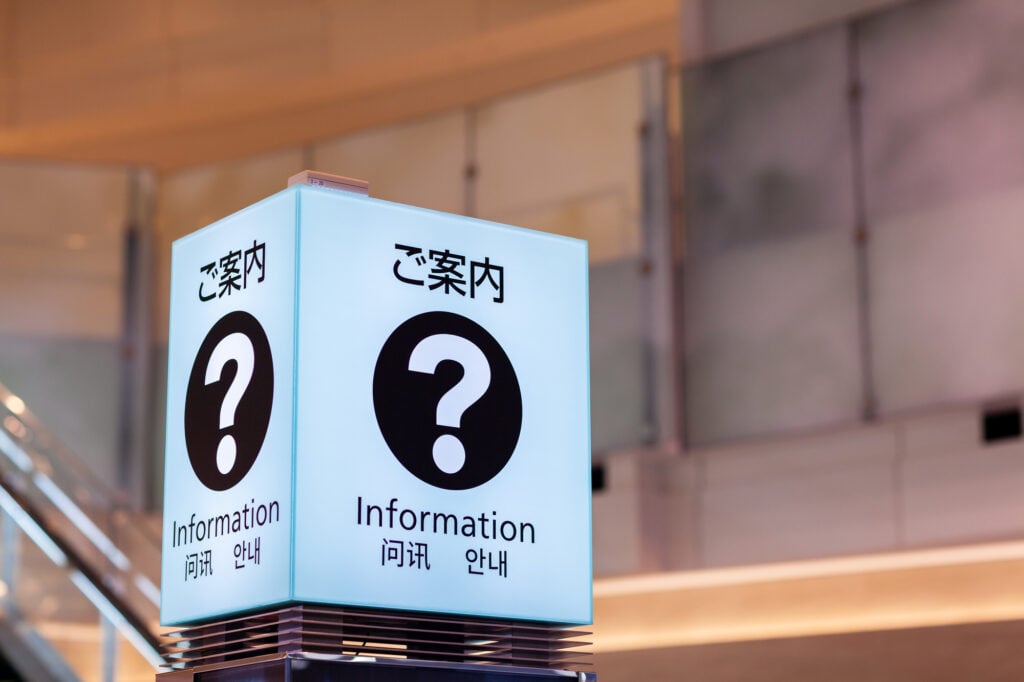
The Information Center is the place to go when you are lost or in trouble at Tokyo Station. Due to its size and complicated structure, Tokyo Station is often confusing to foreign visitors who are visiting for the first time.
Therefore, we recommend that you make use of the Information Center.
The Information Center will help you reach your destination smoothly.
1. Location and services of the Information Center
There are several Information Centers in Tokyo Station. Located near the Marunouchi Central Exit and Yaesu Central Exit, they are staffed with English and other multilingual staff for your peace of mind.
They can provide assistance with sightseeing information, transfer information, maps of the station, and much more.
Even travelers using Tokyo Station for the first time can stop by and feel at ease without getting lost.
2. Telephone support "JR East Infoline"
If you cannot go directly to the Information Center or have an urgent question, the “JR East Infoline” telephone support is convenient.
The service is available in English, Chinese, and Korean, and questions can be answered in real time.
Hours of operation are from 10:00 to 18:00 daily (except for year-end and New Year holidays), and the phone number is 050-2016-1603. This is a convenient service that can be utilized when you are lost in the station.
3. Multilingual signs and station numbering system
At Tokyo Station, information signs are also available in English, Chinese, Korean, and other languages.
This makes it easy for foreign visitors to navigate the station and easily find exits and transfer points.
A station numbering system has also been introduced, with each station and line indicated by a number, making it easy to navigate intuitively even if you do not understand Japanese.
For example, the Marunouchi Line is numbered “M01” and the Ginza Line “G13”, so you will not get lost when moving or changing trains.
4. Official website of JR East
If you want to check information in advance, JR East's official website is convenient.
Information pages are available in nine languages, including English, Chinese, and Korean, and you can also check route maps and tourist information.
By planning in advance before arriving at the site, you will be able to move more smoothly within the station.
If you have any problems at Tokyo Station, the Information Center can be of great help.
With multilingual information and staff, telephone support, and a station numbering system, even foreign travelers can navigate with ease.
Whatever the situation, you can take advantage of our support to make your journey through Tokyo Station smooth and comfortable.
JR-EAST - East Japan Railway Company (jreast.co.jp)
JR East Ekitabi Concierge Tokyo
Suitcases and baby strollers are not a problem! Points to keep in mind when moving around
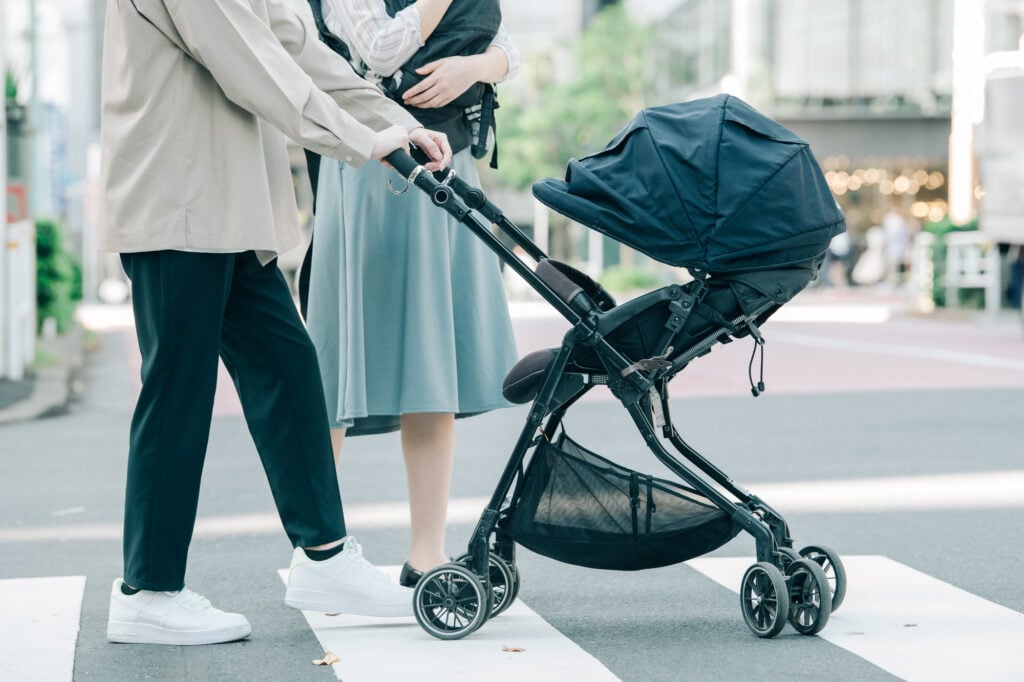
Tokyo Station is one of Japan's major terminal stations, where numerous train lines converge.
When traveling with suitcases and strollers, you may feel uneasy about moving around the spacious station, but a few tips will help you get around with peace of mind.
Here are some tips to help you get around Tokyo Station comfortably.
1. Use elevators and escalators
Tokyo Station is well-equipped with elevators and escalators near platforms, ticket gates, and exits.
If you have suitcases or a baby carriage, there is no need to force yourself to take the stairs.
You can make use of the elevators installed at various locations to facilitate your movement.
In addition, the locations of elevators are clearly indicated by information signs.
Checking the elevator locations in advance will help you move comfortably even during busy times.
2. Use the “Tokyo Station Navi” to search for routes with no steps
Even more convenient is the official “Tokyo Station Navi” application.
This app allows you to search for routes with no steps, which is very useful when you are using a suitcase or a baby stroller.
The location of elevators and slopes are displayed, so you will not be troubled by steps while moving.
The application can be downloaded for free, so installing it in advance will make getting around Tokyo Station even easier.
3. Use wide aisles to move smoothly
Tokyo Station is crowded with people during busy times, but there are several wide aisles within the station, making it easy to avoid the crowds even if you have a suitcase or stroller.
In particular, avoiding the morning and evening commuting hours makes travel even more comfortable.
By using the wide aisles, the risk of bumping into other users is also reduced, making travel stress-free.
4. Consider coin lockers for strollers and baby carriages
Tokyo Station is also equipped with an abundance of coin-operated lockers, so you can leave your large luggage with us and travel light.
For those using strollers, the station is also equipped with wide elevators and priority spaces.
Making good use of these facilities will make your travel at Tokyo Station even more comfortable.
Tokyo Station's station services make travel more convenient!
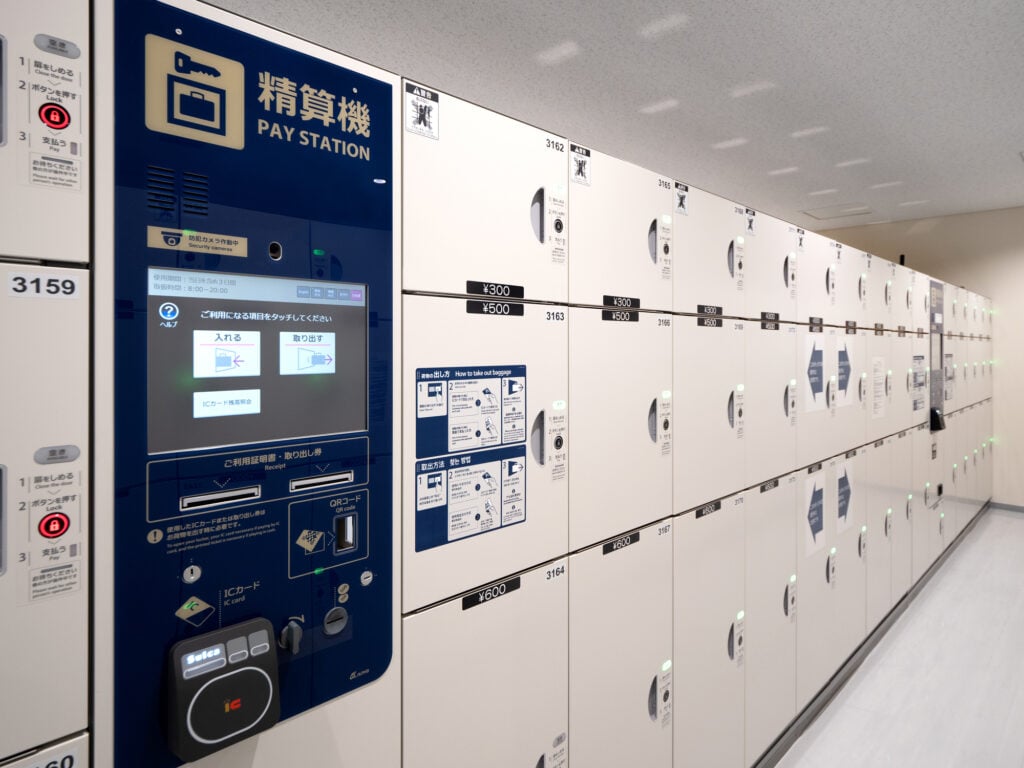
Tokyo Station offers a number of convenient station services to make your trip more comfortable.
Especially for foreign travelers visiting Japan for the first time, these services will make your travel and sightseeing smoother.
Here are some of the main services available in and around Tokyo Station.
1. TIC TOKYO - Tourist Information Center for Foreigners
TIC TOKYO (Tokyo Information Center for Convention and Visitors), located in front of the Nihonbashi exit of Tokyo Station, is a tourist information center for foreigners authorized by JNTO (Japan National Tourism Organization).
Here, you can obtain tourist information not only for Tokyo, but for all of Japan.
Multilingual staff, including English-speaking staff, are on hand to provide detailed information on tourist attractions and transportation.
This is a place where you can easily consult with them when your sightseeing plans suddenly change and you are not sure where to go.
The office is open from 10:00 am to 7:00 pm. Please take advantage of this service during your trip.
2. Use coin lockers to travel light
There are many coin lockers in Tokyo Station, where you can leave your suitcases and baggage and travel light.
Locker sizes and fees vary by location, so it is convenient to check in advance.
In addition, while lockers may be full when crowded, you can check the availability of coin-operated lockers and make reservations in advance by using an online service called "MultiEcube Web".
By using this service, you can leave your suitcases and other large luggage in a safe place and enjoy sightseeing and transportation.
3. Comfortable internet environment with free Wi-Fi
Free Wi-Fi is provided within Tokyo Station, allowing you to access the Internet anywhere.
This will come in handy when checking maps or searching for your next destination while on the move.
Especially for travelers from overseas, easy Internet access will allow them to look up necessary information quickly and easily, thus allowing them to proceed with their trip with peace of mind.
A guide to recommended spots in the station! The best places to eat and take a break

Tokyo Station is a convenient location with many great spots for dining and resting. Whether you want to take a break during your trip or enjoy a well-deserved meal, you will find a variety of options within the station. A wide range of stores, from restaurants to cafes, will accommodate both short breaks and solid meals.
We will now introduce some of the recommended places to eat and rest within Tokyo Station.
- “Beck's Coffee Shop Marunouchi South Exit”
Located near the Marunouchi South Exit of Tokyo Station, Beck's Coffee Shop Marunouchi South Exit is a convenient café that opens early in the morning; it opens at 6:30 am, making it the perfect place to grab a quick bite before a commute or trip.
It features aromatic coffee made from carefully selected beans from around the world, ensuring that you can enjoy your morning cup of coffee.
Homemade paninis are also a popular menu item, perfect for relaxing while enjoying a light meal.
Located inside a train station, the café is an easy stopover during busy intervals and is well-liked by many users.
- “THE STANDARD BAKERS TOKYO”
This bakery pursues new bread possibilities from Tokyo Station.
The lineup features about 50 to 60 varieties of breads made with fresh seasonal ingredients, with a focus on Hokkaido wheat and butter.
The lineup always has a sense of seasonality.
More than half of the breads are original products newly developed for this store, and the variety is a distinctive feature.
Open from 7:00 am, it is the perfect place for breakfast on the way to work or a light meal before a trip.
Open until 10:00 pm Monday through Saturday and until 9:00 pm on Sundays and holidays (*until 10:00 pm if the following day is a holiday), the bakery is loved by a wide range of customers as an easy stopover during their busy daily lives.
- "EATALY MARUNOUCHI".
Founded in 2007 in Turin, Italy, Eatery Marunouchi is a restaurant that offers a wide variety of Italian food and beverages.
Here you will find a wide range of high-quality Italian food products, which you can enjoy for all occasions based on the concept of eating, buying, and learning.
Inside the store, you can enjoy authentic Italian cuisine in the restaurant, relax in the café, and shop for ingredients.
From ingredients to cuisine, this is a fascinating spot where you can experience the rich culinary culture of Italy.
The goods sales are open from 9:00 am, and the café/restaurant is open from 11:00 am to 10:00 pm, making it a convenient place to stop by during a trip or after work.
- "Fruit Parlor Kajitsuen"
This popular fruit parlor offers parfaits and cakes lavishly made with fresh fruit. Even after its reopening, it is still loved by many people.
It is especially popular among women, who often wait in line to get in.
They use seasonal fruits carefully picked at the market every morning, and serve the most delicious fruits of the day.
They want people to enjoy fruit on a daily basis, not just as a special treat, so they also offer a full menu of light meals that can be eaten easily.
This is a great place to stop by during a trip or outing, as you can enjoy desserts made with fresh and carefully selected fruits in a relaxing atmosphere.
Open from 9:00 am to 10:00 pm, you can easily visit from morning to night.
Comfortable travel in Tokyo Station!
Tokyo Station is a very large station, and for first-time visitors, changing trains may seem a bit complicated, but if you know how to transfer beforehand, you can move smoothly.
By checking the location of platforms and ticket gates for each line, you will not only be able to reach your destination without getting lost, but you will also know in advance where the elevators and escalators are, which is useful if you are carrying luggage.
In addition, Tokyo Station has multilingual signs and information boards, making it a friendly environment for foreign travelers.
Even if you are in a hurry, these preparations will allow you to move around with plenty of time to spare.
Please refer to the points introduced in this article to make your travel in Tokyo Station more comfortable.

